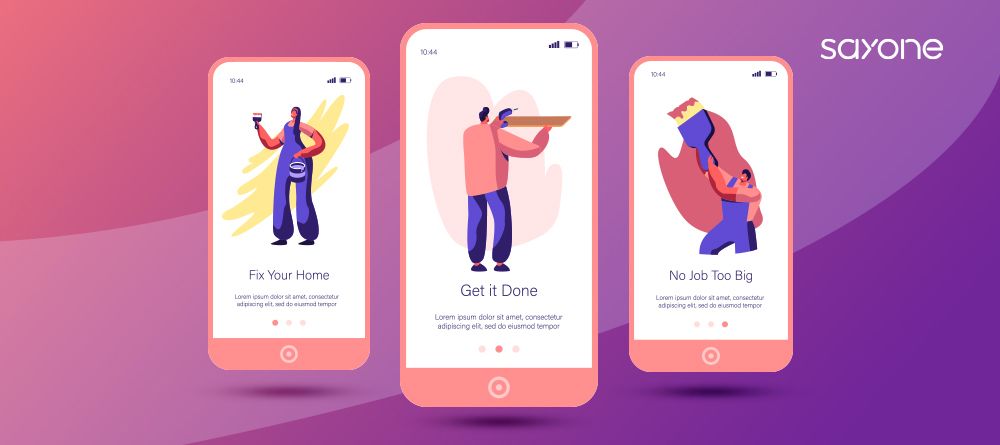
Subscribe to our Blog
We're committed to your privacy. SayOne uses the information you provide to us to contact you about our relevant content, products, and services. check out our privacy policy.

Akhil SundarMarch 20, 20235 min read

Generating table of contents...
In this blog post, we attempt to discuss the basic points of mobile app user interface design. In addition to the key principles of mobile app UI design, we also briefly touch upon how to conceive and build requirements for the designs, and how they can be implemented. We also briefly discuss testing the design and further steps involved.
Mobile app interface design principles (also called heuristics) are very important and they can help to improve the UI design and accelerate delivery time.
The six most common user interface design principles are the structure principle, the simplicity principle, the visibility principle, the feedback principle, the tolerance principle, and finally, the reuse principle are very briefly described below.
The user interface should be organized purposefully and meaningfully based on clear models that are recognizable to users.
The design should be simple, communicate clearly in the user’s language, and provide good meaningful shortcuts to longer procedures.
The design should present the required options for a given task in a manner without distracting the user.
Read our blog “Modern Architecture for Mobile Apps in 2023”.
The design should inform users of actions, changes of state, and relevant errors using clear, concise, and unambiguous language.
The design should be flexible, reducing the cost of further mistakes and misuse.
The design should reuse both internal and external components and behaviors to maintain consistency with purpose.
Testing is done at each stage of the UX design process (after thumbnail sketches, wireframes, hi-fi mockups, and prototypes). UX design is a balance between the designer’s intuition and data. Here, user testing is the primary force in the decision-making process.
You should consider prototyping the app using only messaging as the delivery channel to break down your service into smaller tasks that will be pieced together over time. Context is important when testing your mobile app.
Download our eBook for FREE “How to Optimize Your UI for Different Devices”.
When testing the app it is important to have the user in their natural environment. And replicating where your users typically engage with their mobile devices is important. As an example, it could be on a chair, a sofa, or while walking in the room, etc. This will help you to get a better idea of what you are creating.
Get in touch for a free consultation
Download our eBook for FREE “Global Software Development Rates – an Overview”.
Using tools like Sketch Mirror helps you to view your sketch files on your phone (with the latest changes/updates). Incorporating applets can help to improve user experience. This is done without additional coding and so does not delay the development process.
The five components that need to be thought about, planned, and established before testing mobile apps are:
Using basic UI design principles and a basic design process, you can quickly distill your ideas into solid UI designs.
Looking for web or mobile app development services? Get in touch with us!

We're committed to your privacy. SayOne uses the information you provide to us to contact you about our relevant content, products, and services. check out our privacy policy.

About Author
Subject Matter Expert

We collaborate with visionary leaders on projects that focus on quality